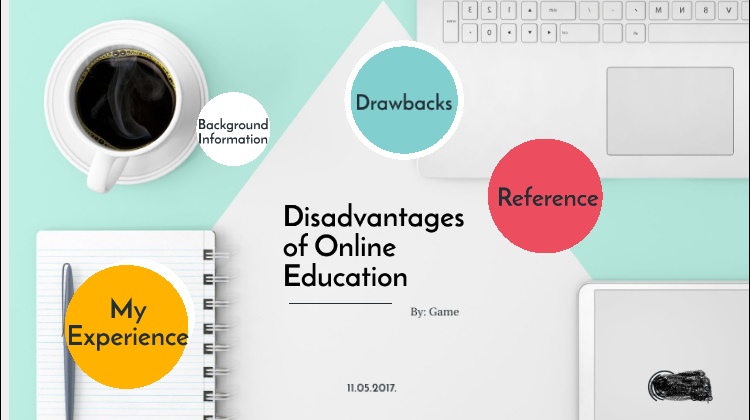Benefits & Drawbacks of Digital Education 2023
It’s difficult to believe that twenty years ago, the Internet was a concept only deeply knowledgeable computer nerds understood. Most of our daily tasks now use this invention as their primary infrastructure.
The Covid-19 epidemic taught us that an increasing number of tasks can now be completed online, and today almost everything in our lives is digitalized. We have quickly gotten used to Zoom meetings, remote employment opportunities are growing, and the future’s potential is intriguing.
The education industry has also begun to change over the past ten years. Digital education is prevalent and is about to be around for a while.
Then, what precisely is digital learning? What advantages do online courses have over those offered in a classroom? For more information, keep reading.
Table of Contents
What Exactly is a Digital Learning Platform?

The time when learning only occurred in a classroom and was primarily acquired from the teacher is long gone. With a few mouse clicks, digital technology has made learning accessible, giving students various options for studying what they want to learn, how they want to learn it, and where they want to learn it.
A learning management system (LMS) or a learning content management system (LCMS) can be used to create a digital learning platform. It might also be a virtual classroom or learning environment (VLE). With the abundance of resources available today, students can take charge of and self-direct their learning while the instructor’s role remains the same.
The current COVID-19 pandemic has greatly boosted the acceptance of online education. As a result, all educational institutions, including schools, colleges, universities, and vocational schools, have implemented a digital learning platform.
Although the features and functionalities of each platform differ, all digital learning platforms may enable all forms of learning, including blended learning, online learning, and classroom learning. Since the Internet and digital technology have taken on more and more importance in our lives, the adoption of specialized technical solutions to support online learning has become essential.
What Benefits Are There to Digital Education?

1. Personalized Learning Environment
An important area for improvement in the conventional educational system is that many students lose interest when they cannot catch up with the rest of the class. Teachers can modify course materials according to each student’s preferred learning method and aptitude, thanks to the new digital format.
As the educational system becomes more digital, so makes the impact of instructional programs. One of the biggest advantages of digital learning is the ability of instructors or course providers to tailor their curricula or learning programs to a particular student.
2. Electronically Updated
In a world where technology is ever-evolving, techniques and knowledge may quickly become outdated because there is always something new occurring. Giving students access to current events and other subject-related issues is now necessary rather than optional. Students must be computer literate because they spend a lot of time on their phones and laptops.
3. 24-Hour Support

Not all students are always the most successful. Some people work best in the morning, while others put in more time and effort in the evening. The concept of the “back of the class” is gone with online learning. The student can control the tempo.
The issue is that the conventional learning paradigm needs to consider this. If you want to learn the traditional way, you must remain attentive for the entire class period. If you can maintain the necessary focus level, you can stay caught up.
It is a fact of life that there are occasions when people must be present or accessible even though they are ill. They have 24/7 access to all the required resources, so they can also catch up on their schedule.
4. Students Gain More Knowledge
Thanks to the digital education system, students can evaluate the knowledge they require to find and use online resources. Students exposed to new tools and technologies for learning become very good at learning independently. Their efficiency, learning capacity, and productivity are all adversely affected.
5. Accountability of Students
The digital education system integrates real-time evaluation and system-generated performance reports, increasing assessment transparency. It enables students to evaluate their performance independently and suggest the necessary corrections. The ability of digital learning to provide a more thorough approach to education has been demonstrated.
Although it may seem strange, combining automation and technology helps prevent children from becoming mere cogs in the machine. As a substitute, it increases their output and helps them reach their full potential.
The use of technology in the classroom encourages students to break out of their comfort zones and become independent thinkers who know what to study, when to study, and how to do it. There is no way that any two students are alike, so why should their education be?
Although the conventional face-to-face approach has been successful for some time, we now understand that other factors influence how well a student learns.
Moreover, they no longer rely on their parents and teachers to teach them things. By considering the student’s aptitude and development, they can adjust their plans to consider challenges or rapid progress.
The middle students always controlled the pace of the class in the previous system, where there was one instructor for every 40 to 80 students. If you’re ahead, you have to wait for the others to catch up; if you’re struggling, you risk falling behind because there needs to be more time to make up lost ground.
The requirements for adopting digital learning by the student may impact how the instructor structures their course. It also makes it simple for them to offer personalized, confidential feedback to each child.
6. Adjustable Classrooms

Teachers are now substituting more cutting-edge technological tools for the old “chalk and talk” approach to show students that learning can be exciting and creative.
Modern classrooms typically have a TV or projector, which makes it easier to switch from an interactive digital lesson to a traditional one. Students’ familiarity with technology use may make it easier for them to concentrate.
7. Recorded Content
Many students who have taken online courses can attest to the value of the course material that has been recorded.
It is easy to see why, given that you can rewind and catch up later if you miss something in the course. Assume that you only partially understood your instructor’s argument and must fully understand it to understand the rest of the lecture. Once the session has been recorded, you can use the opportunity to go over that subject in greater detail, then review anything you missed.
Increase your independent study to compensate for the lost time. Nevertheless, it benefits students of all ages, particularly younger ones. Children benefit greatly from repetition during the formative years of development. They can now consume it between lessons, which hastens their development.
8.Higher Involvement Learning
Since the functional elements of the traditional educational system are limited to textbooks, a teacher, and handwritten notes, there are few opportunities for participation. In contrast, the digital educational system provides many learning options.
Every session is unique and enjoyable due to the infinite supply of resources. Interactive and game-based learning activities lengthen students’ attention spans.
9. Unending Knowledge

Before the digital education system gained popularity, students relied on limited sources of knowledge, but this is no longer a barrier to learning.
On the Internet, there are a ton of resources that are free to use. Students can now study and apply this vast knowledge base thanks to the development of digital education.
10. Boosts Proficiency in Writing
The frequent use of lengthy textual communication is a defining feature of online learning. Video conferencing will be possible, but because messaging apps can be used quickly, they will be the most popular form of communication.
You may learn a lot when you must communicate through a medium without speaking, making gestures, or making facial expressions. The best way to master grammar, punctuation, and emoji usage is through practice. Emojis, punctuation, and a variety of grammatical constructions can all convey subtle meaning.
Although it may be tragic for some, the pen-and-paper era is another. Graduates from digital learning environments are likely to be touch-typists, which will be necessary for future job markets.
11. Exchange of Comfort
The traditional educational model, which heavily relied on students keeping large notebooks of handwritten notes containing information learned from professors in the classroom or through extensive study in the library, is fundamentally altered by the current digital educational system. With the dawn of the digital Sun, tech has introduced online note-pad tools to get rid of hassles in managing large storage of physical notes or notebooks. Most of them don’t cost even a penny. Harnessing a free online notepad, students can save or store an unlimited number of notes in digital forms. Students can save and share knowledge that is now accessible with just a click, saving them a ton of time and effort.
12. Various Information
In the history of our species, we have never had instant access to more knowledge. Online content is being added more frequently and for free. The main lesson here is that knowledge is available, reachable, and up to date, even though many of those searches may be performed by individuals looking to settle a dispute or for other purposes.
This information wormhole was only feasible after the Internet. At this time, Google currently responds to over 73,000 searches every second. Consider the last time you performed a search on Wikipedia, clicked a link, and then read about the Hindenburg tragedy. Even a small amount of this knowledge would have taken hours to research in a library or use your grandparents’ Encyclopedia Britannica collection.
Students are also encouraged to use objectivity when researching information online by using a solid digital learning strategy. Utilizing this simple availability of information, digital learning supports students in effectively using it.
Overall, this method offers pertinent information on many topics to help learners achieve the best results possible during the learning process.
13. Boosting Morale with Employee Recognition
While digital education offers flexibility and convenience, it can sometimes lack the personal touch of traditional learning environments. One way to bridge this gap is by fostering meaningful relationships with educators, even in virtual settings. Expressing gratitude, such as sending teacher thank you cards, can help strengthen the student-teacher connection, making the online learning experience more engaging and personal. Small gestures of appreciation can go a long way in creating a supportive and positive learning atmosphere, even in the digital realm.
What Drawbacks Are There to Digital Education?
An online education system has the following drawbacks:

1.Trouble Concentrating on Screens
It can be difficult for students to focus on the lecturer’s words the entire time. Due to the online nature of the instruction, students are easily distracted by other websites and social media channels. Therefore, instructors must keep the course concise and interesting to keep students from drifting off during lectures or becoming distracted.
2. Reduce Your Screen Time
Parents are concerned about the possible health risks brought on by their children’s excessive screen time. The quantity of screen time is among the most important problems and drawbacks of online learning. Many students develop poor posture and other physical conditions, such as impaired vision, due to spending so much time hunched over computer screens.
3. Time Management Skills and Internal Motivation are Essential

Online courses allow you to learn at your own pace. You can decide when it is most convenient for you to start learning the material. The biggest advantages come at the expense of self-motivation. You must adhere to a rigid schedule and a predetermined curriculum in a typical classroom. Additionally, you can use the assistance of your classmates to set the right attitude. It’s easy to lose motivation and procrastinate when you’re learning independently. Good time management is necessary to avoid delays and meet deadlines.
4. Self-control is Required for Online Education
Accountability is enhanced by being active in the community and meeting in person. If they feel their supervision needs to be improved, students might not have the self-control to engage fully in the lessons. Moving from online courses to virtual, live classrooms improves accountability. For instance, live assessments like exams and breakout sessions promote group participation. These resources promote accountability and keep kids interested.
5. Issues with Quality Assurance and Accreditation
E-learning is still a relative innovation in the educational world. Many e-learning platforms need to be accredited, and the caliber of the instruction is not subject to an independent evaluation.
The lack of institutional accreditation and content quality control undermines the credibility of online learning. To ensure that e-learning can compete with traditional learning, we must ensure that all online learning systems are competent and properly authorized.
6. Cheating is One Thing to Be on the Lookout For

One of the biggest drawbacks of online learning is the inadequate monitoring for cheating during exams. Students can cheat in a variety of ways because of e-learning. Students conduct assessments while in their immediate surroundings, using their devices. Because the instructors only have access to the live video stream, cheating is more challenging to detect. Students have devised sophisticated exam-taking fraud schemes and even permitted third parties to do so.
7.Lack of Communication Skills Development
E-learning still has a lot of issues, despite being a very effective method of instruction. While theory can be learned at the student’s own pace, communication skills should be more frequently noticed. The main reason is that students and instructors rarely interact with each other. Even though they may have theoretical knowledge, students who work on their communication skills will only be able to convey it to others in an effective manner.
8. Insufficient Feedback from Teachers to Students
Professors’ prompt responses to students are one of the most crucial elements of traditional education. This feedback can come quickly in a typical classroom setting, but it is more limited in an online learning environment. Students can speak with their teacher about their issues and get prompt assistance during the lecture or at designated times. Personalized feedback is crucial for students to receive because it benefits them. It also raises student morale and enhances the educational experience. However, the standard feedback system could be more effective in this situation. Student assessments that are part of online learning include some feedback but need to be more personalized. Students may become disengaged if they do not receive tailored feedback.
9. Concerns About Technology
Another area that could arise during online classes is better internet connectivity. Although internet access is now more widely available, some isolated areas of smaller towns and villages still need a fast internet connection.
You can only deliver the lecture or attend it if your internet connection is strong. The students may experience distortion. As a result, it takes work to focus on in class.
10.Feelings Connected to Isolation

When students are with their classmates, they learn much more effectively. Less physical contact exists between the students and the teachers in online classrooms. As a result, there is a feeling of seclusion, which might make learning more difficult.
To avoid this, schools must establish extra lines of communication between instructors, students, and peers. This includes ways to communicate via email, video conferencing, online chat, and other means to feel less alone.
11.Education of Teachers
There are several prerequisites for online learning, such as the requirement that instructors have a fundamental understanding of how to use particular features to deliver an online lecture.
However, this is only sometimes the case, as some educators might not be very comfortable using modern technology. Teachers sometimes need more materials or equipment to conduct an online session.
This problem might be resolved in schools by holding training sessions that give lecturers access to the newest technological features and advancements, allowing them to deliver online lectures without difficulty.
Frequently Asked Questions
Ans. Increased interaction and classroom participation are two significant technology-related effects on education. The use of blended learning strategies, practical learning, time management, and improved general comprehension are some other ways that technology has influenced student learning.
Ans.It enhances infrastructure and educational opportunities for students. The biggest benefit of technology for kids is how much better and simpler learning is now. Students can look up additional information online if they need clarification on any aspect of a subject.
Ans.Isolation may result from online learning. Each individual has a unique way of learning.
- Self-control is necessary for online learning.
- Teachers must receive additional training to facilitate online learning.
- Online classes frequently experience technical problems.
- Online education is associated with more screen time.
- Digital learning increases access to education and information while giving students a mindset and skill set that positions them for success now and in the future. Our reliance on digital tools and platforms in our personal and professional lives is increasing.
- Digital learning increases access to education and information while giving students a mindset and skill set that positions them for success now and in the future. Our reliance on digital tools and platforms in our personal and professional lives is increasing.
Ans.Learners can use digital education to gain the skills and knowledge needed to understand and utilize technology. Students who receive a digital education are accustomed to conducting online information searches and using the Internet to access, consume, and share information.
To Sum Up

Institutions of higher learning must learn how to use technology as it advances. Learning resources are available 24/7, seven days a week, through cloud-based digital learning systems. Schools and institutions of higher education are progressively integrating digital learning technologies to help students learn and advance academically. You can download the course materials and use them offline as well.
These platforms also provide a range of channels for communication between students, teachers, and other learners. For instance, they might ask questions on a message board and ask for advice from teachers and other students. Instead of waiting until the next day, they can chat with or contact their professors for a quicker response.
Additionally, students can take charge of their education and identify their areas of strength and weakness. Additional features and tools enable them to collaborate and function as a team. Last but not least, using technology in real-world settings exposes kids to it in a way that will help them when they look for future jobs.
Read More: What Is LinkedIn Learning? Is It Worth It?




